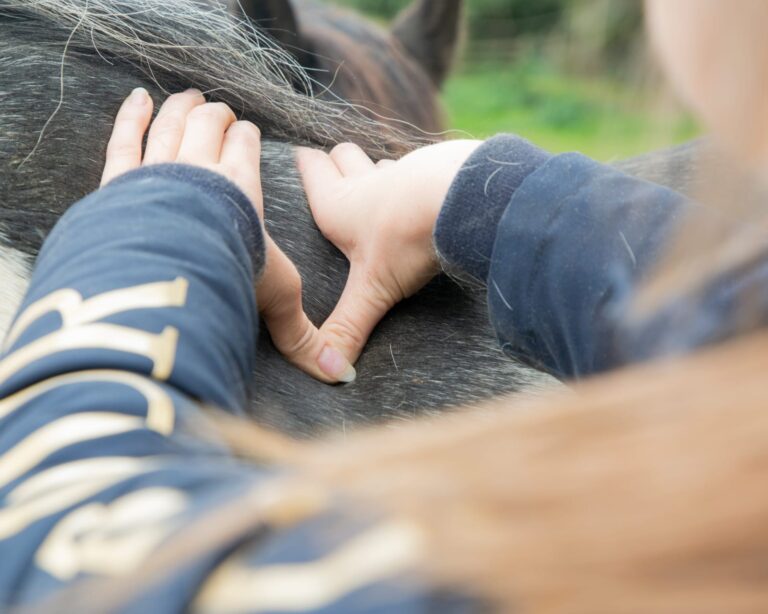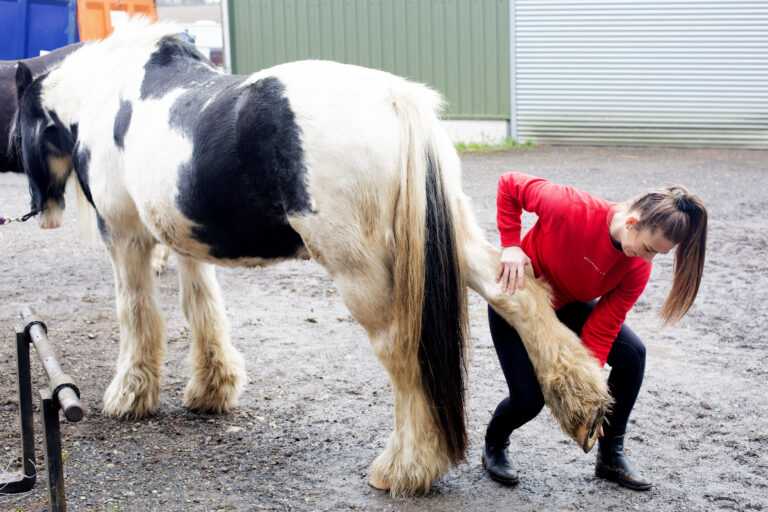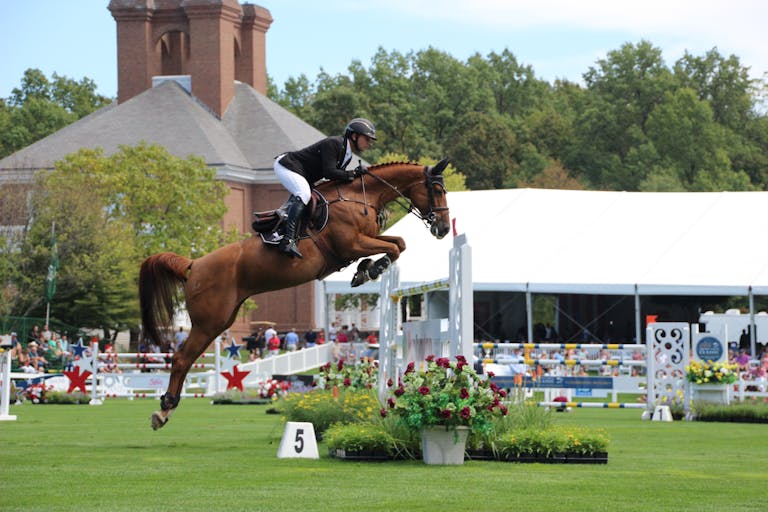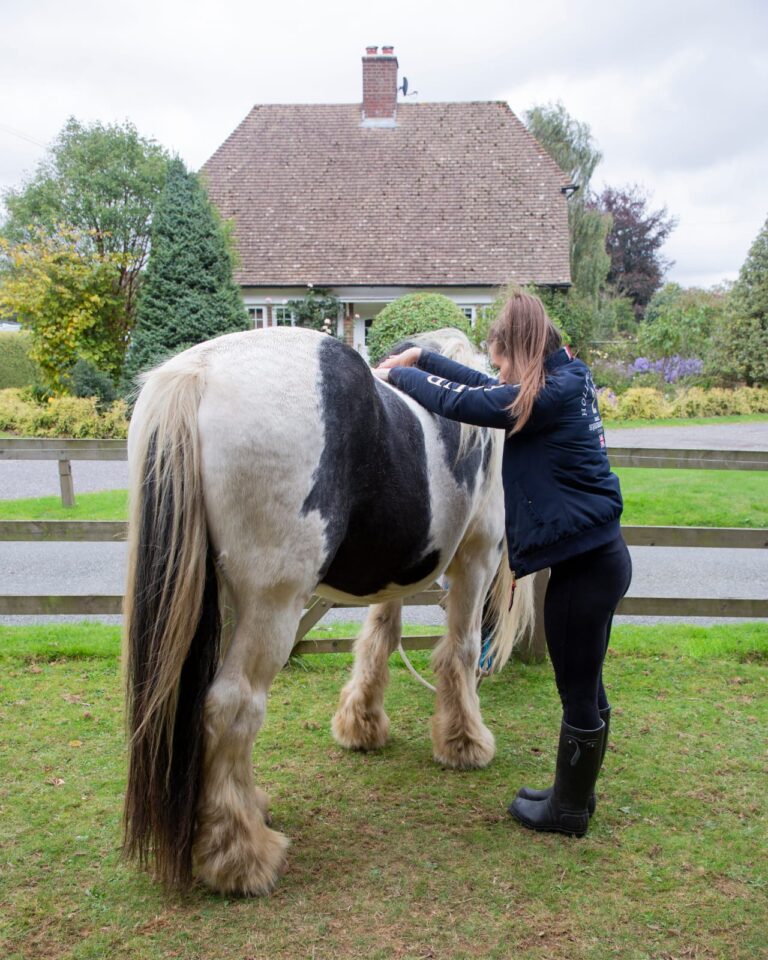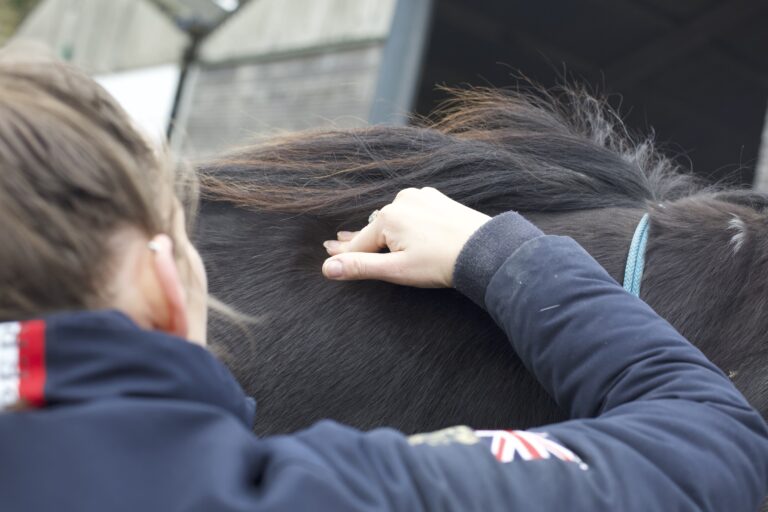Supporting Laminitic Horses: The Role of Massage in Managing Spring Grass Challenges
Spring is a season of new beginnings, longer days, and greener fields. For horse owners, it can be one of the most beautiful times of the year. However, for those managing laminitic horses, spring also presents a unique and serious set of challenges. The explosion of lush, sugary grass that fills the paddocks during this time can easily trigger laminitis in horses. This condition is not only painful but potentially life-altering for affected horses.
Managing laminitis is multi-faceted. While diet restriction, pasture management, and veterinary care form the cornerstone of treatment, supportive therapies like equine massage therapy are becoming increasingly recognised for the role they play in easing the burden on laminitic horses. Massage is not just about relaxation; it can support systemic health, ease compensatory issues, and enhance a horse’s overall resilience during difficult periods. In this article, we will explore how massage therapy can make a tangible difference in managing laminitic horses during the challenging spring grass season.
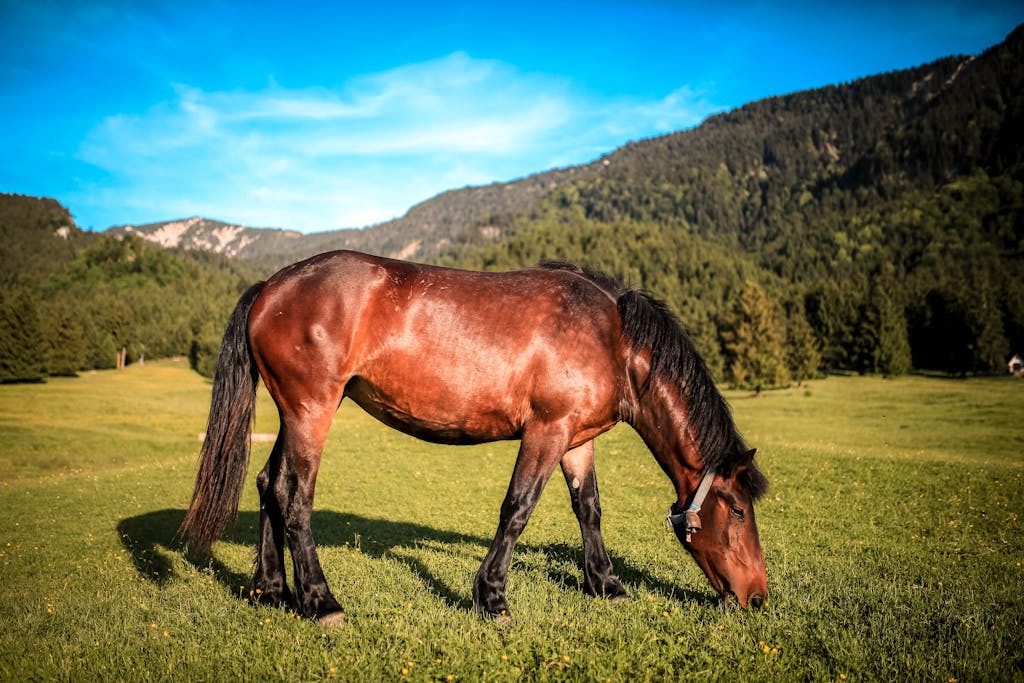
Understanding Laminitis and the Spring Grass Connection
Laminitis is the inflammation of the sensitive laminae, the soft tissues that anchor the hoof wall to the coffin bone within the hoof capsule. When these tissues become inflamed, their ability to support the structures of the hoof weakens. In severe cases, this can lead to the rotation or sinking of the coffin bone, a condition that causes immense pain and can leave horses crippled if not managed carefully.
Spring is a high-risk time for laminitic episodes because the rapidly growing grasses are rich in non-structural carbohydrates (NSCS), including sugars and starches. These NSCS can disrupt a horse’s gut microbiome when consumed in excess, triggering a cascade of inflammatory responses throughout the body, including in the laminae. Horses with underlying metabolic conditions such as Equine Metabolic Syndrome (EMS) or Pituitary Pars Intermedia Dysfunction (PPID) — often referred to as Cushing’s disease are even more susceptible.
Despite the best efforts of owners to restrict grazing, use muzzles, and offer low-sugar forage alternatives, the reality is that even a few mouthfuls of rich spring grass can trigger problems in susceptible horses. This is why additional layers of support, including therapeutic bodywork, can be so valuable in the overall management strategy.
The Broader Impact of Laminitis on the Horse’s Body
One aspect of laminitis that is sometimes overlooked is its impact beyond the hooves. When a horse experiences significant hoof pain, their entire posture and way of moving change. In an attempt to relieve pressure on their front feet, which are most commonly affected, horses may shift their weight back onto their hindquarters, develop a ‘founder stance’, and maintain a tight, braced posture.
Over time, these compensations can lead to secondary issues, including muscle tightness, joint strain, fascial restrictions, and even long-term alterations in movement patterns. Some horses will develop tension across their shoulders and chest, as well as tightness along the spine, and sore hindquarters, as they adjust their biomechanics to alleviate foot pain.
It is in addressing these secondary musculoskeletal issues that massage therapy proves to be such a powerful tool. While it cannot ‘cure’ laminitis itself, which is a veterinary-managed condition, it can vastly improve a horse’s comfort, reduce the risk of secondary injury, and support recovery once a laminitic episode is under control.

How Massage Therapy Supports Laminitic Horses
One of the most immediate benefits of massage for horses with laminitis is the relief of pain. Massage promotes the release of endorphins, the body’s natural painkillers, which can help ease both acute and chronic discomfort. By working gently to release muscle tension, massage can help horses adopt a more natural posture, even if hoof pain persists.
Another significant benefit is improved circulation. Good blood flow is critical for healing damaged laminae, as it ensures oxygen and nutrients are delivered efficiently to the affected tissues. Massage stimulates circulation not just at the site of the massage but systemically, encouraging better overall metabolic health. In horses prone to laminitis, where circulation to the extremities can sometimes be compromised, this is particularly important.
Postural correction is another area where massage shines. Horses that have suffered from laminitis often develop deeply ingrained compensatory movement patterns. Over time, these compensations can lead to musculoskeletal imbalances, causing new sources of pain or even predisposing the horse to further injury. Through careful palpation and soft tissue work, a trained equine massage therapist can identify areas of asymmetry and tension and work to release them, encouraging the horse to move more freely and comfortably.
Beyond the physical, emotional well-being is another area where massage therapy provides support. Horses undergoing treatment for laminitis often experience significant emotional stress. They may be confined to a stable, separated from their companions, or placed on a highly restricted diet, all of which can contribute to feelings of frustration, anxiety, and depression. Massage provides a calming and nurturing experience that can help lower cortisol levels, the primary stress hormone, and enhance overall mental well-being.
In many cases, horses visibly relax during massage sessions, exhibiting signs of release, such as licking and chewing, yawning, and even falling asleep. This emotional release is just as valuable as the physical benefits, creating a positive feedback loop that supports both the mind and body during the recovery process.
Practical Application: Massage Techniques for Laminitic Horses
When approaching a massage for a laminitic horse, gentleness is key. Techniques must be tailored to the horse’s level of pain and mobility. In the acute phase of laminitis, when inflammation and pain are at their highest, very light touch, such as myofascial release techniques or gentle effleurage (long, sweeping strokes), is most appropriate. The goal during this phase is not to manipulate intensely but to promote relaxation and enhance circulation without causing additional discomfort.
As the horse stabilises and inflammation decreases, deeper techniques can be cautiously introduced. Attention is often focused on the shoulders, neck, and back, as these areas are most likely to bear the brunt of compensatory tension. The hindquarters also benefit greatly from massage, as they often become overworked during periods when the horse shifts its weight off the front feet.
A full-body approach is usually most beneficial, as it allows the therapist to address patterns of compensation holistically rather than treating isolated areas. The therapist must also remain flexible and responsive, adjusting techniques based on the horse’s feedback during the session. Sometimes, less is more, especially when it comes to horses recovering from laminitic episodes.
It is important to note that massage therapy should never replace veterinary care. Instead, it acts as a complementary therapy, working in harmony with veterinary treatments, farriery, nutrition management, and exercise rehabilitation programs.

Case Studies: Real-World Examples
Take, for instance, a 16-year-old cob gelding named Max. Max developed a severe laminitic episode in early spring after an unseasonably warm week caused a sudden surge in grass growth. Although his owner acted quickly, restricting his access to pasture and working closely with her vet, Max developed a stiff, tense posture, bracing through his shoulders and hips to relieve pressure on his painful front feet.
Working with an experienced equine massage therapist, Max underwent a series of gentle massage sessions focusing initially on relaxation and circulation. As his acute pain subsided, deeper tissue work helped to release the compensatory tension he had built up. Over several weeks, Max’s posture improved, his movement became freer, and his overall demeanour brightened significantly. His veterinarian and farrier also noticed positive changes, remarking on his improved balance and reduced muscle stiffness.
Max’s case is just one of many where supportive therapies, such as massage, played an essential role in a holistic recovery plan.
Building a Holistic Management Plan
For horses prone to laminitis, springtime management requires a proactive and multi-layered approach. Limiting access to sugary grass through restricted turnout, grazing muzzles, or dry lot turnout remains essential. Ensuring the diet is low in non-structural carbohydrates, balancing minerals, and supporting metabolic health with appropriate supplements forms the nutritional backbone of prevention.
Veterinary support is vital for monitoring and managing any underlying conditions, such as PPID or insulin dysregulation. Regular farrier care, focusing on appropriate hoof balance and support, also plays a crucial role in preventing further damage to the laminae.
Massage therapy complements this holistic plan perfectly. It addresses the often-overlooked secondary effects of laminitis, supporting the horse’s musculoskeletal system, enhancing emotional well-being, and providing a gentle but effective tool for improving overall comfort.
By viewing laminitis not just as a hoof condition but as a systemic, whole-horse issue, owners can develop more comprehensive, compassionate, and effective management strategies.
Final Thoughts
Spring grass poses a significant risk to laminitic horses, and successfully navigating this season requires vigilance, knowledge, and a multi-pronged management strategy. Alongside dietary control, veterinary care, and appropriate exercise, massage therapy offers a powerful and often underutilised tool for supporting laminitic horses.
By easing muscle tension, improving circulation, encouraging better posture, and promoting emotional resilience, massage can help horses cope more comfortably with the physical and emotional demands of laminitis recovery.
As awareness grows around the benefits of supportive therapies, equine massage is increasingly becoming an essential part of the toolkit for owners dedicated to providing the very best care for their laminitic horses, not just during the challenges of spring, but year-round.
With careful management and the proper support, laminitic horses can enjoy happy, active lives, even amid the challenges of lush spring pastures.
